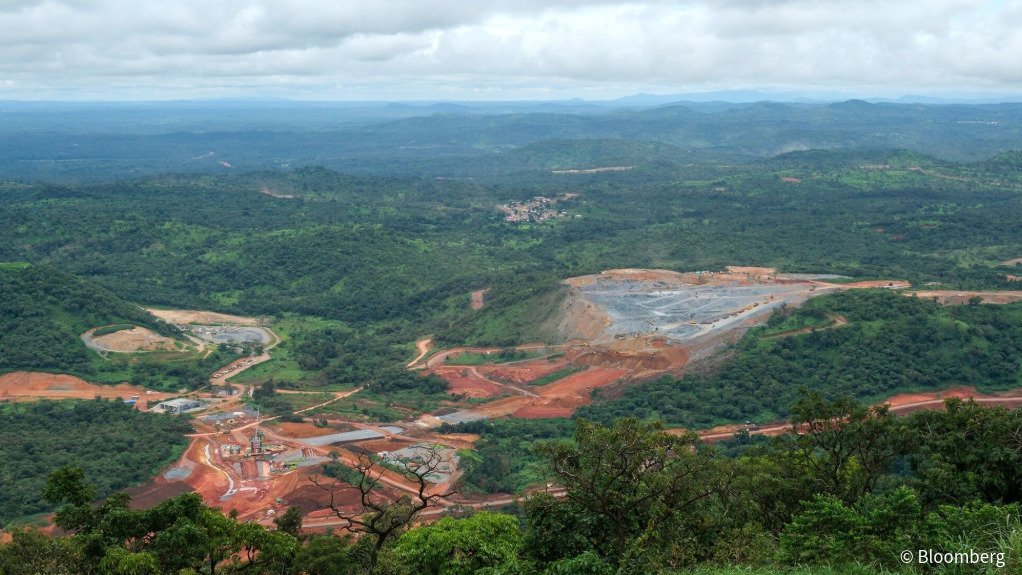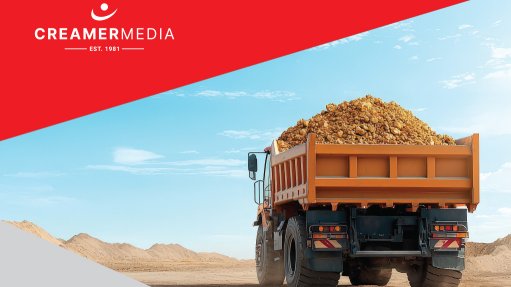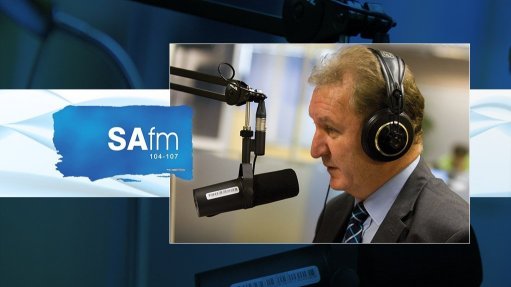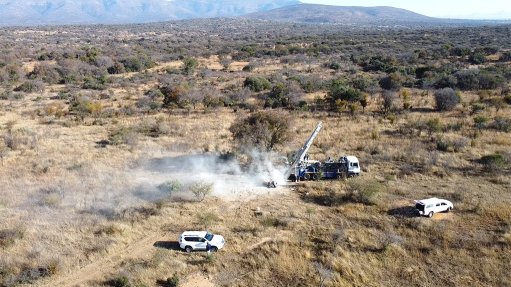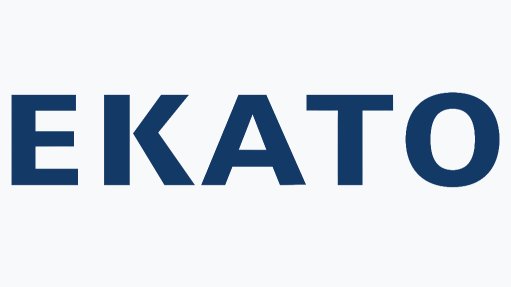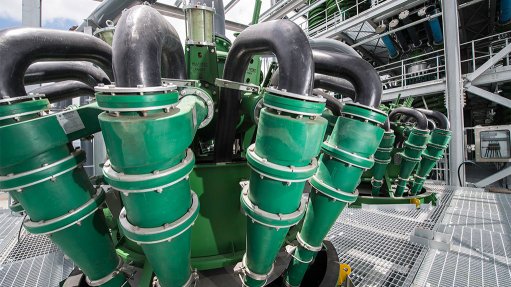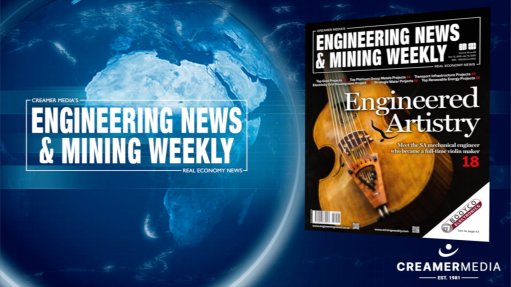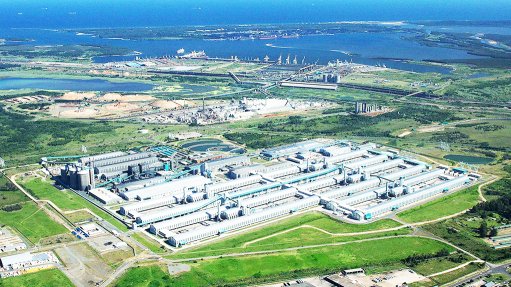China’s massive African mine threatens to upend the iron-ore market
In April 1998, a young geologist and his team set out from the village of Moribadou and trekked for six hours through the Guinea Highlands, a densely forested plateau that spreads across four countries in West Africa. “It was extremely difficult,” said Sidiki Koné. “In front was forest. It was forest to the left and forest to the right. Behind it was the same thing. And I said ‘how is this work possible?’”
Koné was mapping and drilling for his employer Rio Tinto Group, one of the largest mining companies. It had recently confirmed the presence of vast quantities of iron ore — the raw material for manufacturing steel. The Simandou deposit, buried below one of the world’s most biologically rich ecosystems, was first explored in the 1950s when Guinea was still a French colony. It would turn out to be one of the biggest on the planet.
The remoteness of the iron-rich mountains that daunted Koné — combined with military coups, corruption scandals and corporate intrigue — helped keep Simandou’s valuable trove in the ground for almost three decades. Yet, a brand-new railway last month began carrying ore to a purpose-built port, from where it will be dispatched to China’s steelmaking furnaces some time before the end of this year.
The scale of Simandou is staggering. It’s the world’s largest untapped iron-ore deposit, with estimated reserves of at least 3 billion tons. Rio’s plan involves blasting ore — with an iron content among the highest on Earth — from an 8-kilometer long sliver of mountain ridge, before moving to a second site once the first is depleted. At $23-billion, it’s Africa’s biggest ever mining project and could make Guinea the continent’s No. 2 exporter of minerals and metals by value.
And it’s a moment that has the iron-ore market holding its collective breath. The size and richness of the deposit means the start up at Simandou threatens to further tilt the power dynamics in a market already facing an uncertain demand future, and at a time when the top buyer, China, is pushing for greater influence over the world’s most-traded commodity after oil. For years, global iron-ore production has been dominated by a small handful of companies: Rio itself, alongside larger rival BHP Group and Brazil’s Vale.
Despite once holding the rights to the whole of the greater Simandou deposit, Rio now has just a quarter share and is the West’s only representation. Today, Chinese firms own most of the project. Even Rio’s biggest shareholder is its Chinese joint-venture partner at Simandou, Aluminum Corp of China.
The flood of rich new supplies will give Beijing more leverage to control iron-ore prices and curb its dependence on foreign mining behemoths. It will help to turn a weak link in Beijing’s supply chain into strategic strength, building on China’s dominance in mining and refining African resources from copper to cobalt and lithium.
Even before the first shipment leaves West Africa, market sentiment toward iron-ore — the mining industry’s biggest earner — has turned bearish.
“Never before has China held this level of pricing power over the seaborne iron-ore trade,” said Tom Price, head of commodities strategy at Panmure Liberum. “Expect it to start calling the shots here.”
This is the story of how Simandou finally became a reality and what it means for the companies behind it, the future prosperity of Guinea and the $300-billion iron-ore market.
TAKEOVER DEFENSE
When Bloomberg visited the mine belonging to Rio’s joint-venture toward the end of the rainy season in September, the site resembled an out-of-season ski run, as contractors carved out the route for a 6.6-kilometer conveyor belt that will transport ore down from the top of the mountain.
Drawing on projects from President Xi Jinping’s flagship Belt and Road Initiative, everything from workers’ accommodation to ship loaders and rail sleepers have been installed at a breakneck pace using designs that have been fabricated dozens of times elsewhere. On the outskirts of the mine, executive Chris Aitchison pointed to a railway bridge that forms part of a 70-kilometer spur linking the production area to the main rail line. The structure — 307 meters long and 28 meters high — was erected in little over a month. The reason: it’s a carbon copy of bridges used on the high-speed rail from Beijing to Shanghai.
“China has built this repertoire you don’t get in the West,” said Aitchison, who since 2022 has headed Simfer, the consortium between Rio and Chinalco that’s developing one half of the Simandou deposit. “It’s where we see the benefits.”
FROZEN IN LIMBO
Rio has changed its chief executive officer seven times since Koné began his field studies. For the first decade after his trek through the forest, Simandou’s transformation remained a pipe dream — exploration continued on the deposits laid down almost 3 billion years ago, but it stayed an obscure outpost in Rio’s portfolio.
That changed in 2007, when BHP made a $78 billion hostile bid for Rio. With its back against the wall, the smaller company put Simandou at the heart of its takeover defense, trumpeting its riches as evidence that BHP’s offer undervalued the company. Rio likened Simandou’s potential to the Pilbara, the region of Western Australia that’s home to the world’s biggest iron ore mines.
“The strategic importance of Simandou for Rio Tinto cannot be overstated, given the size and quality of the deposit and the market opportunity, but its importance to the people of Guinea is even more profound,” then-CEO Tom Albanese said in February 2008.
In the end, the global financial crisis came to the miner’s rescue, but its asset in West Africa was firmly on the map. Guinea wanted to know why Rio was sitting on such a game-changing resource.
The Simandou deposit has an iron content that averages above 65%, making it one of the highest and most prized grades in the world.
As pressure mounted on the miner, the country’s president Lansana Conté stripped the firm of half the project in late-2008, before transferring it to diamond billionaire Beny Steinmetz. Weeks later, Conté passed away. Steinmetz’s BSGR quickly sold 50% of its Guinean assets to Vale for $2.5-billion.
The rapid-fire chain of events would leave Simandou stuck in limbo for another decade. Guinea was run by a military junta until 2010, when Alpha Condé was elected president with promises to revamp and clean up of the mining industry. Acting on advice from billionaire hedge fund manager George Soros and former UK Prime Minister Tony Blair, the government produced a lurid dossier of alleged corruption that led Condé to revoke BSGR and Vale’s rights to Simandou in 2014. Seven years later, a Swiss court convicted Steinmetz of bribing public officials in Guinea, and he’s subsequently lost appeals. Vale has said it was a victim of a fraud perpetrated by BSGR.
And Rio’s involvement was also hanging by a thread. Incoming Chief Executive Officer Jean-Sébastien Jacques inherited a mess in mid-2016: the company fired two executives over a $10.5 million payment to a French consultant on the project and reported itself to regulators. Rio even tried to sell its interest in Simandou to its partner, Chinalco, but failed to close the deal.
CHINESE BACKING
The turning point for the project came in late 2019, when a consortium of Chinese and Singaporean companies was awarded the rights to develop the two blocks previously held by the BSGR-Vale joint-venture.
Winning Consortium Simandou already had a history in Guinea: one of its sister companies had built bauxite mines and was constructing a railway to a port, forming a key link in a production boom that saw the country become the world’s top supplier of the ore used to make alumina, the primary feedstock for aluminum.
At Simandou, the distance and terrain separating the ore body from the coast had long been the principle obstacle — and WCS wasn’t wasting any time. The consortium almost immediately began moving forward with plans for a rail corridor to get the iron ore 600 kilometers across the thickly forested countryside, and a new port complex capable of handling 120 million tons a year.
At this point, Rio Tinto — the world’s second-largest mining company and the project’s original owner — looked like it might be relegated to the position of a bystander.
The huge sums involved in pulling the trigger on Simandou were daunting to a company that was trying to prove to investors it could be prudent following a string of disastrous deals.
Still, the Guinean government was adamant it wanted to keep the Western investor in its key national asset, and was encouraged in its efforts by lobbying from the US embassy, according to a person familiar with the matter who asked not to be identified discussing a private issue.
For Rio, momentum shifted when Bold Baatar — the Mongolian former banker put in charge of Simandou — saw the infrastructure already built in Guinea by Sun Xiushun, the China-born Singaporean entrepreneur who runs WCS.
“The moment it became clear that was the way to go was the trip I took with Sun to see his railway network in bauxite in the north,” Baatar recalled. “I saw the Chinese engineering competencies of how they can get it done.”
In July 2022, WCS and Rio formed a partnership to finance and build the infrastructure together. Under Condé’s successor General Mamadi Doumbouya, Guinea got a 15% “free-carry” stake in the new umbrella entity, as it has in both mines. The deal needed WCS and Rio to overcome their reservations about working with each other, according to Djiba Diakite, minister director of the cabinet of the presidency. “It’s companies that don’t have the same business models, that don’t have the same corporate culture,” Diakite said in an interview.
The final hurdle had been cleared.
PILBARA KILLER
The first cargo is scheduled to start loading this month and sail from Guinea around the end of the year, when a Newcastlemax bulker will depart with about 200 000 tons of ore mined by both consortiums. Rio, which will take another year to complete its mine and port, plans to ramp up output to 60-million tons a year over 30 months, while WCS hasn’t disclosed its timeline to reach the same level. The combined volume is equivalent to about 5% of global production in 2024.
For Rio’s peers, it’s finally time to test fears that have stalked the industry for years.
Dubbed the “Pilbara Killer” for its potential impact on Western Australia’s iron ore mines, the arrival of Simandou couldn’t come at a worse time. For the last two decades, China’s demand for iron ore has been insatiable, feeding mills that churn out half the world’s steel.
Yet that output has almost certainly peaked.
Now Simandou strengthens China’s ability to break the power of miners like BHP, Vale and even Rio itself.
State-run iron ore trader, China Mineral Resources Group Co., has become the world’s biggest buyer of the material in just three years, overseeing purchases for most state-owned steelmakers. In September, CMRG escalated a dispute with BHP by sending a directive to steel mills to stop buying US dollar denominated seaborne cargoes of iron ore from the miner, which has so far refused to match the discounts offered by its rivals.
Last year, state-owned China Baowu Steel Group, the world’s biggest steelmaker and likely the project’s top customer, also acquired the largest shareholding in WCS. Baowu and WCS declined meetings in Guinea’s capital, Conakry, to discuss the project, with both citing constraints imposed by the construction schedule.
Internal forecasts at some of the biggest miners expect iron ore to slump to $85 a ton in the coming three years, as Simandou cranks up to full output over the next two and a half years. Even the more bullish predictions see the ore struggling to stay at current levels above $100, which is less than half of its price at 2021’s peak.
ECONOMIC CATALYST
Even the prospect of lower prices hasn’t dimmed Guinea’s enthusiasm for the project: advertisements for “Simandou 2040,” Doumbouya’s national development roadmap, adorn bridges and billboards around Conakry. The government has hired KPMG and Rothschild & Co to advise on how to invest iron ore revenues and secure a first sovereign credit rating for one of the poorest nations on Earth.
If, as widely expected, Doumbouya stands in December in Guinea’s first presidential elections since he ousted Condé, he will campaign on being the leader who brought Simandou to life. He'd previously promised not to run, and in the lead up, his junta has suspended the two major opposition parties amid a crackdown against civil society.
“We will use the project as a catalyst,” said Diakite, who also heads the government’s Simandou Strategic Committee. “The goal for us is not to take the money and spend it. It’s to take the money, a good part of it, to develop the other sectors of our country which aren’t the mining sector.”
His aspiration is for iron ore to do for Guinea what fossil fuels have done for Saudi Arabia and the United Arab Emirates — so that the country can avoid the resource curse that's crippled other African countries. Rio's venture and WCS are also required to finish a study on building a steel plant in Guinea two years after operations start, he said.
The impact could be enormous on Guinea following decades of political violence, coup d’etats, ebola outbreaks and endemic poverty. Most of the local workforce at Simandou cannot read or write. The International Monetary Fund estimates the mines will increase the country’s gross domestic product by more than a quarter by the start of next decade.
But there have been costs. The project encroaches on one of the most biologically diverse ecosystems on the planet, in a country with the largest remaining habitat of the critically endangered West African chimpanzee. It will impact at least 450 villages, while the extraction process creates heavy metal and acid runoff. Workers have also died while building the mines, port and railway.
Pairs of giant locomotives — more than 140 have been ordered from America’s Wabtec — will haul 100 wagons containing about 8,000 tons of ore across more than 300 bridges on the 30-hour journey to the port. Smaller boats will transport the ore to moored cape-size vessels that will take about 48 hours to load. Once the mines hit capacity in 2028, a full ship will leave every day.
The sheer scale of industrial activity stretching from the mines to the port couldn’t be further removed from the two-tent operation Koné began with in the late-1990s. Even Baatar, now Rio’s chief commercial officer, is awed.
“I don’t think there are many mining executives that have anything like this through their life,” said Baatar. “I mean, it’s the largest mining project in the world.”
Article Enquiry
Email Article
Save Article
Feedback
To advertise email advertising@creamermedia.co.za or click here
Press Office
Announcements
What's On
Subscribe to improve your user experience...
Option 1 (equivalent of R125 a month):
Receive a weekly copy of Creamer Media's Engineering News & Mining Weekly magazine
(print copy for those in South Africa and e-magazine for those outside of South Africa)
Receive daily email newsletters
Access to full search results
Access archive of magazine back copies
Access to Projects in Progress
Access to ONE Research Report of your choice in PDF format
Option 2 (equivalent of R375 a month):
All benefits from Option 1
PLUS
Access to Creamer Media's Research Channel Africa for ALL Research Reports, in PDF format, on various industrial and mining sectors
including Electricity; Water; Energy Transition; Hydrogen; Roads, Rail and Ports; Coal; Gold; Platinum; Battery Metals; etc.
Already a subscriber?
Forgotten your password?
Receive weekly copy of Creamer Media's Engineering News & Mining Weekly magazine (print copy for those in South Africa and e-magazine for those outside of South Africa)
➕
Recieve daily email newsletters
➕
Access to full search results
➕
Access archive of magazine back copies
➕
Access to Projects in Progress
➕
Access to ONE Research Report of your choice in PDF format
RESEARCH CHANNEL AFRICA
R4500 (equivalent of R375 a month)
SUBSCRIBEAll benefits from Option 1
➕
Access to Creamer Media's Research Channel Africa for ALL Research Reports on various industrial and mining sectors, in PDF format, including on:
Electricity
➕
Water
➕
Energy Transition
➕
Hydrogen
➕
Roads, Rail and Ports
➕
Coal
➕
Gold
➕
Platinum
➕
Battery Metals
➕
etc.
Receive all benefits from Option 1 or Option 2 delivered to numerous people at your company
➕
Multiple User names and Passwords for simultaneous log-ins
➕
Intranet integration access to all in your organisation



